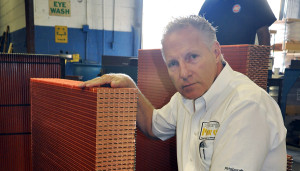 Have you ever noticed a black coating inside your fuel tanks? We have talked about this a few times in the past and discussed why diesel fuel turns black in your tanks and leaves a coating inside. This coating is extremely hard to remove – we have tried steaming, bleach, parts cleaning solvent and many different types of soaps and liquid cleaners, but the black residue still stays in the tank. So, we called in some cleaning experts and, after several tries at their shop, we came up with a mixture of chemicals and custom-bent lines to steam-clean the inside of the tank to make it look new once again.
Have you ever noticed a black coating inside your fuel tanks? We have talked about this a few times in the past and discussed why diesel fuel turns black in your tanks and leaves a coating inside. This coating is extremely hard to remove – we have tried steaming, bleach, parts cleaning solvent and many different types of soaps and liquid cleaners, but the black residue still stays in the tank. So, we called in some cleaning experts and, after several tries at their shop, we came up with a mixture of chemicals and custom-bent lines to steam-clean the inside of the tank to make it look new once again.
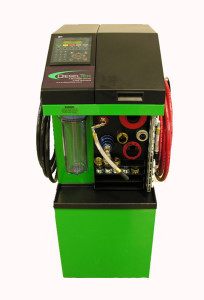 Being that this is an ongoing problem, our technical director John Walko decided to do more research to find out just why does diesel fuel turn black, which means it’s going back to its original state, asphalt. This problem does not exist in older mechanical engines such as 425-B Cats and Big Cam Cummins, however it does happen in the electronic Caterpillar and Detroit engines. The 60 Series Detroit appears to be the engine with the most Asphaltine problems. Common rail fuel systems such as the DD15 Detroit and the ISX Cummins from 2011 to the present do not have the Asphaltine problem.
Being that this is an ongoing problem, our technical director John Walko decided to do more research to find out just why does diesel fuel turn black, which means it’s going back to its original state, asphalt. This problem does not exist in older mechanical engines such as 425-B Cats and Big Cam Cummins, however it does happen in the electronic Caterpillar and Detroit engines. The 60 Series Detroit appears to be the engine with the most Asphaltine problems. Common rail fuel systems such as the DD15 Detroit and the ISX Cummins from 2011 to the present do not have the Asphaltine problem.
So, why does the 1995 through 2011 engines have the Asphaltine problems? John’s studies found the temperature and pressure in the injector tip is high and hot enough to link the molecules found in diesel fuel that create Asphaltine. The injector does not inject all of the fuel that has been heated and pressurized, and returns it back to the fuel tank. The Asphaltine is actually a polymer which is created in the injector tip, then returned to the fuel tank. So, even if you install a fuel cooler, it will not fix this problem because of the heat and pressure present in the injector tip where the polymer is created.
The chemicals we have today to add to the fuel, made by Fleetguard and Penray, are used to disperse (dissolve) the polymer back to diesel fuel. This problem is most present at refineries, where they treat for it constantly, and if your engine produces Asphaltine, you should run the chemicals consistently, too, as opposed to waiting for a problem. The labor to remove the fuel tanks, have them cleaned and then reinstalled, runs about $1,200.
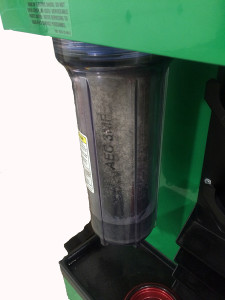 Let’s switch gears now and talk about internal engine cleaning. I have written about this in the not-so-distant past, and the program we created has been very successful. If you own a 2003 or newer truck equipped with EGR and/or a DPF, or a 2011 or newer truck with EGR, DPF and DEF, then you should think about this cleaning process once a year when the oil is due to be changed. This service takes about one hour to perform, and includes a process of flushing the engine with a thin oil with six times the detergents of regular oil. After the internal cleaning is done, you will be amazed at how long you can drive and the oil on the dipstick will remain clean.
Let’s switch gears now and talk about internal engine cleaning. I have written about this in the not-so-distant past, and the program we created has been very successful. If you own a 2003 or newer truck equipped with EGR and/or a DPF, or a 2011 or newer truck with EGR, DPF and DEF, then you should think about this cleaning process once a year when the oil is due to be changed. This service takes about one hour to perform, and includes a process of flushing the engine with a thin oil with six times the detergents of regular oil. After the internal cleaning is done, you will be amazed at how long you can drive and the oil on the dipstick will remain clean.
The newer engines eat a lot of soot, and much of it stays in the engine cavities during an oil change. With our internal cleaning process, the engine is pressure-washed with an ultra-high detergent oil and the cavities are flushed out. The normal price for this service is $350 plus oil and filters, but during this summer, we are having a special – the price is only $275 plus oil and filters. Try it once and see how much extra dirt we can get out of your engine. You will be amazed!
The summer heat is here… and with it comes high coolant temperatures. Owner-Operators expect a lot out of their trucks and engines today. Years ago, on the very hot days, especially in the South, many guys would sleep during the day and truck during the night because they could not keep their coolant temperatures down. Thankfully, today’s charge air coolers, better radiators and electronically-controlled engines have made it possible to drive on those hot days.
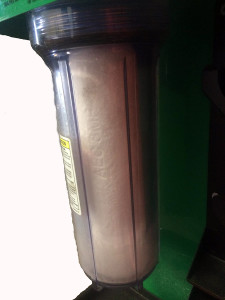 Something working against these cooling advancements are 190- and 195-degree thermostats. We always install the 180-degree stats because it takes 16 degrees to fully open. So, if your truck is equipped with a 195-degree stat, it will not be fully open until your coolant temperature is 211 degrees. Please don’t be afraid to manually turn on the fan before getting into the hard pull section of a mountain. It is always easier to beat the heat than to try and cool it off once it gets really hot.
Something working against these cooling advancements are 190- and 195-degree thermostats. We always install the 180-degree stats because it takes 16 degrees to fully open. So, if your truck is equipped with a 195-degree stat, it will not be fully open until your coolant temperature is 211 degrees. Please don’t be afraid to manually turn on the fan before getting into the hard pull section of a mountain. It is always easier to beat the heat than to try and cool it off once it gets really hot.
If a cooler engine is what you seek, we can help you out. The radiators we build and sell at Pittsburgh Power are always made with as many tubes as we can fit in the confines of the opening of the hood. Think about this, on a 379 Peterbilt, equipped with a 500-hp Detroit, there are 177 tubes to cool the water and 14 fins-per-inch to carry away the heat. If the same truck is equipped with a 550 Caterpillar engine there will be 234 tubes. Our 379 Peterbilt radiator has 400 tubes and 16 fins per inch. Plus, we use a dimpled tube to dissipate more heat from the coolant. Yes, this radiator costs about $1,000 more than a stock radiator, but you’re getting twice the radiator. Then, install the 180-degree thermostat and your engine will run cool, even on the hottest days.
Another trick I used to do on the Big Cam 4 Cummins with the low-flow cooling system was to install an additional coolant tank. I would use an air tank, mount it back in the frame rails near the transmission (or wherever there was space), and run a 1-inch water line to the front of the tank. I would take the coolant from the engine right in front of the block heater and then return it out of the far end of the air tank back to the water manifold. Then, I’d add about five extra gallons of coolant to the radiator, and the results were pretty amazing. The engine would run 20 degrees cooler on a hard pull.
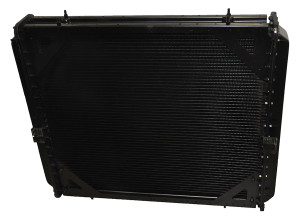 One of our clients from Ohio mounted a radiator out of a Camaro with an electric fan on it, and once the coolant came out of the tank and then passed through the Camaro radiator, his cooling problems were solved. Sometimes you just have to be creative! If you have comments or questions, I can be reached at Pittsburgh Power in Saxonburg, PA at 724-360-4080.
One of our clients from Ohio mounted a radiator out of a Camaro with an electric fan on it, and once the coolant came out of the tank and then passed through the Camaro radiator, his cooling problems were solved. Sometimes you just have to be creative! If you have comments or questions, I can be reached at Pittsburgh Power in Saxonburg, PA at 724-360-4080.
